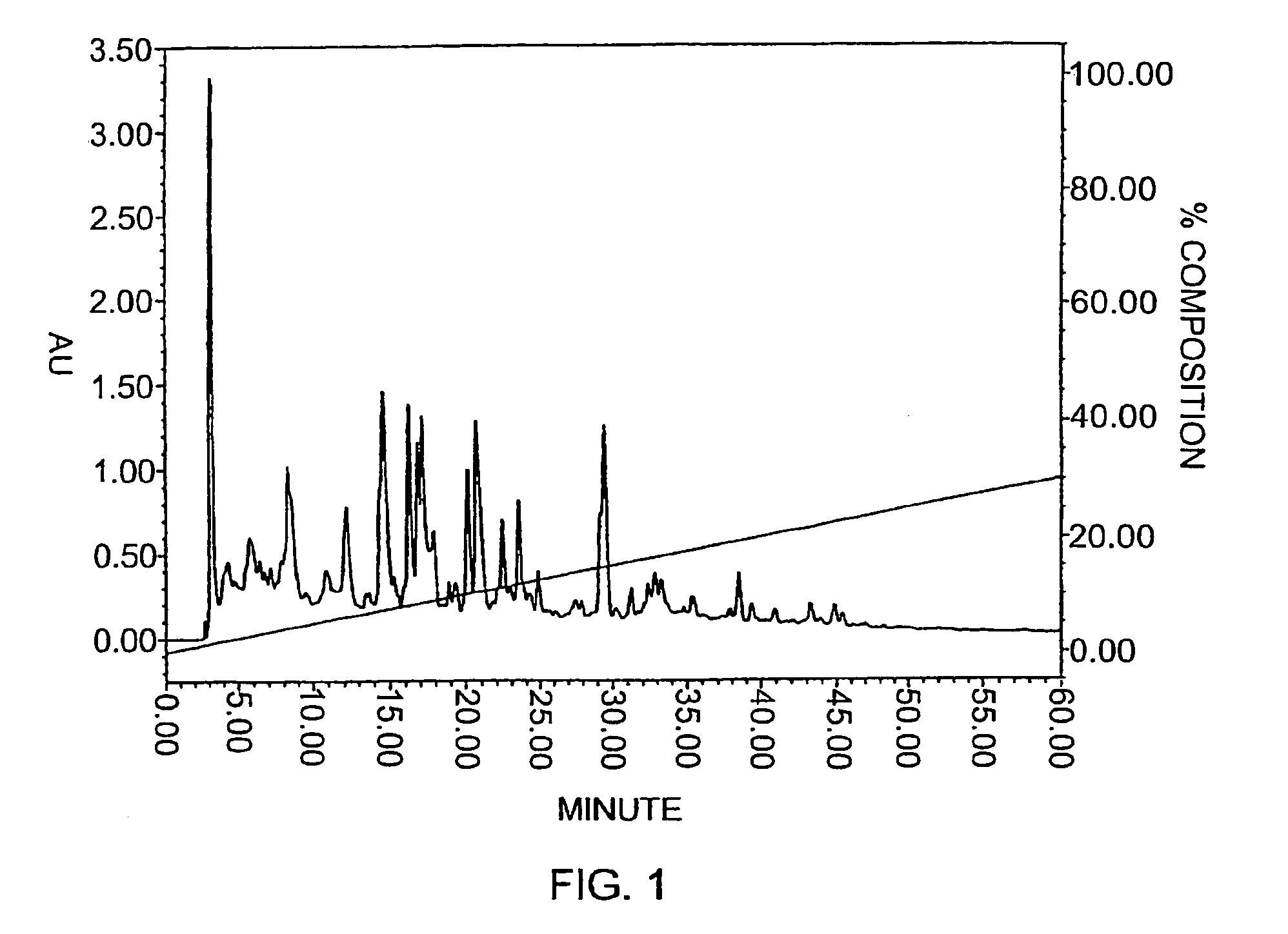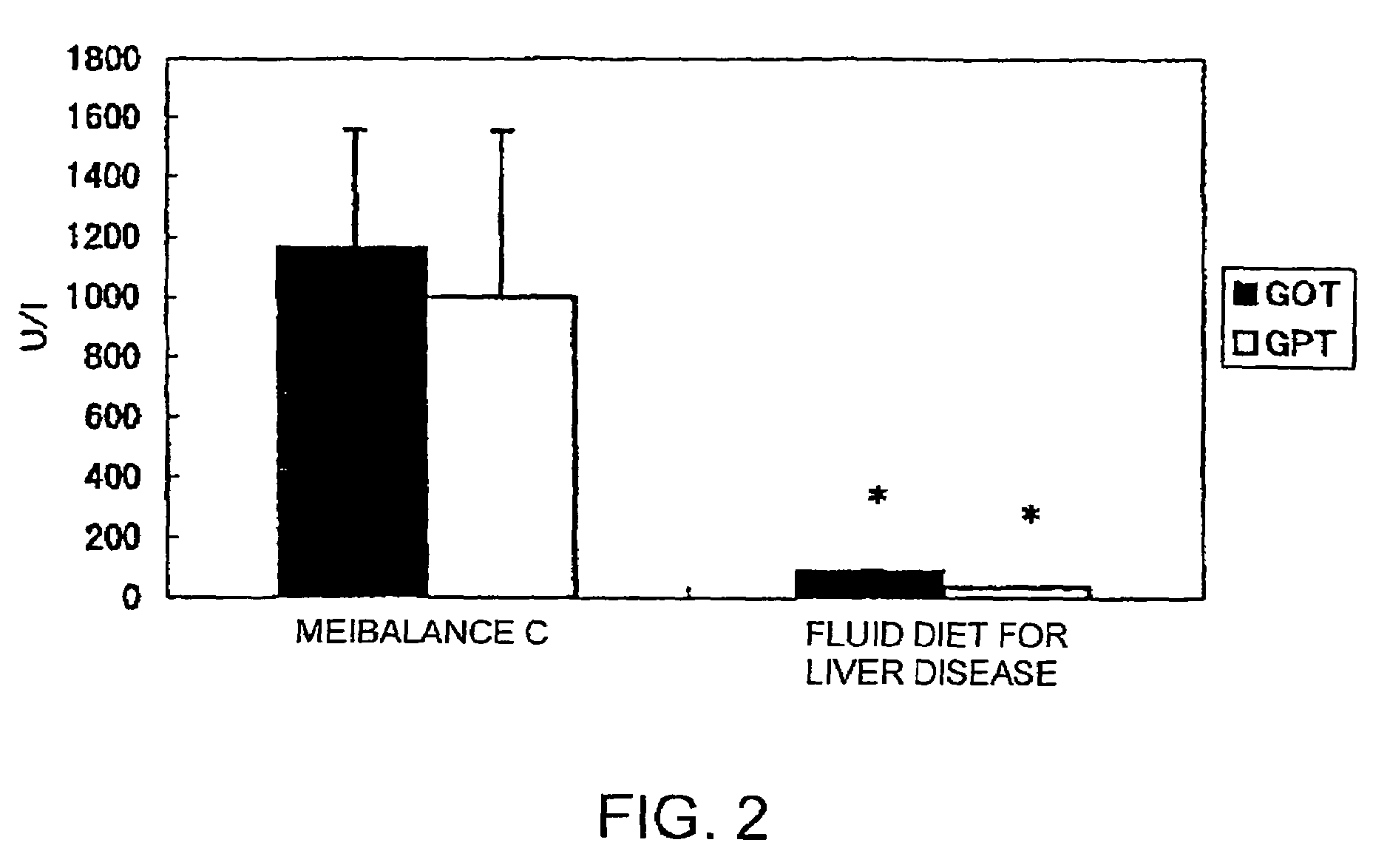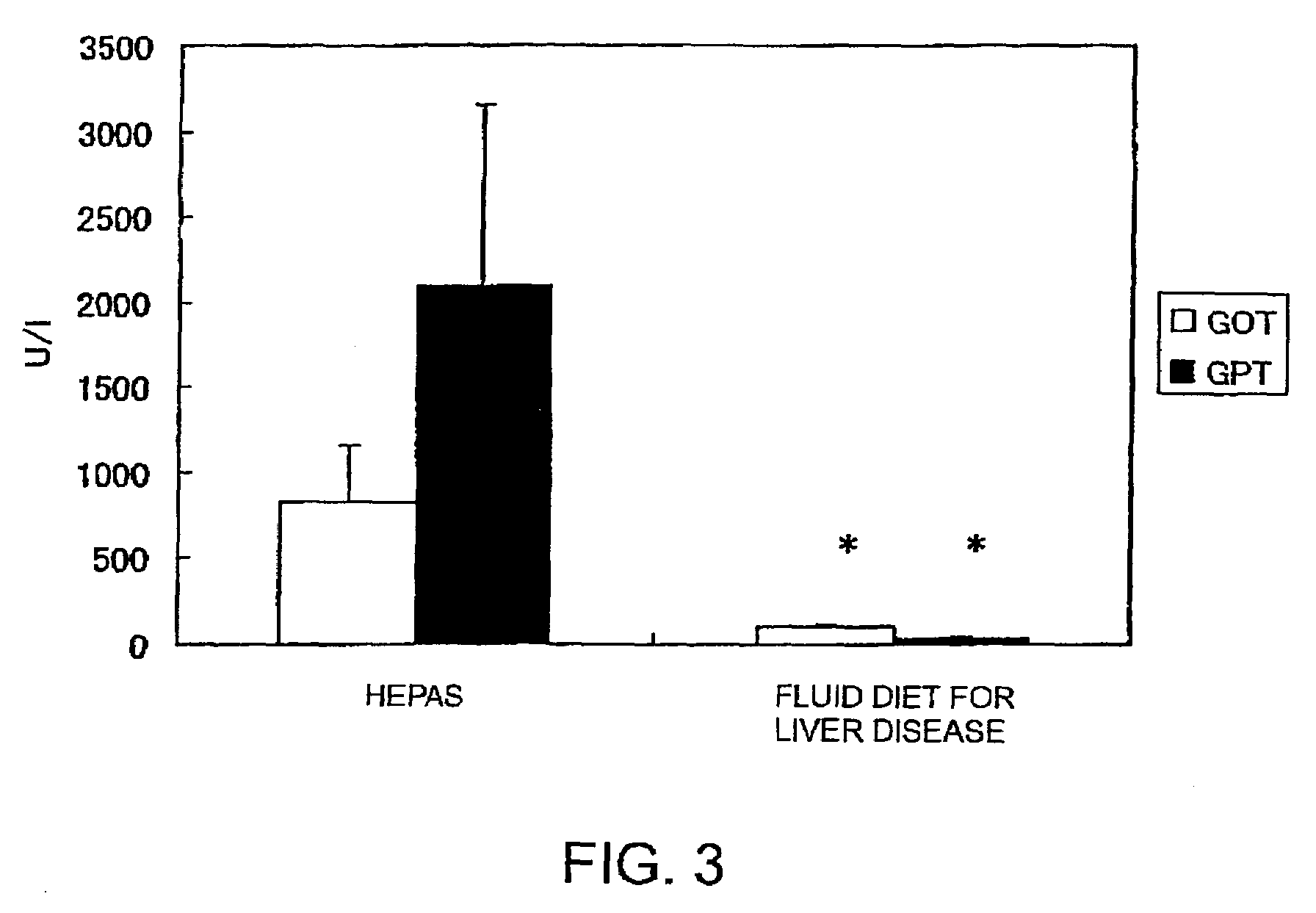Nutritional compositions for nutritional management of patients with liver disease
a technology for nutritional management and liver disease, applied in the field of nutritional compositions, to achieve the effects of suppressing in vivo production, suppressing inflammatory cytokine production, and enhancing the production of lps-induced tnf- and il-6
- Summary
- Abstract
- Description
- Claims
- Application Information
AI Technical Summary
Benefits of technology
Problems solved by technology
Method used
Image
Examples
example 1
Preparation of a Whey Protein Hydrolysate
[0110]A whey protein isolate (WPI, Davisco) containing approximately 90% dry proteins was dissolved in distilled water to form an 8% (w / v) protein solution. The proteins were denatured by heat treatment of the solution at 85° C. for two minutes. The pH of the solution after this heat treatment was approximately 7.5. Hydrolysis was performed by adding Alcalase 2.4 L (enzyme, Novozymes) at a concentration of 2.0% relative to the substrate, and this mixture was reacted for three hours at 55° C. PTN 6.0S (Novozymes Japan), which is pig-derived trypsin, was then added at a concentration of 3.0% relative to the substrate, and this mixture was reacted for three hours at 55° C. Complete hydrolysis took six hours. The pH at reaction completion was approximately 7.0. The whey protein hydrolysate was centrifuged (20,000×g, 10 min), then treated with a UF membrane with a fractionation molecular weight of 10,000 (Millipore, Ultrafree-MC).
[0111]The permeat...
example 2
Preparation of Nutritional Compositions
[0115]Nutritional compositions containing the ingredients shown in Table 3 were prepared using standard methods. The whey protein hydrolysate prepared in Example 1 was used. Platinose can be obtained from Shin Mitsui Sugar Co., and freshly prepared oil and fat from NOF Corporation. Milk-derived phospholipid can be obtained by following, for example, the method described in JP-A Hei7-173182. An example is shown below:
[0116]After adding 2000 mL of 99.5% ethanol to 800 g of butter serum (BAEF) (Corman), the mixture was stirred for five hours, then suction filtered. The filtrate was concentrated under reduced pressure to yield 160 g of crude lipid. 480 mL of acetone was added to this crude lipid, and the mixture was stirred for 0.5 hours and then suction filtered. 480 mL of acetone was added to the residue, and the mixture was stirred for 0.5 hours, suction filtered, and the residue dried in vacuo to yield 50 g of phospholipid concentrate.
[0117]
TAB...
PUM
| Property | Measurement | Unit |
|---|---|---|
| molecular weight | aaaaa | aaaaa |
| pH | aaaaa | aaaaa |
| energy ratio | aaaaa | aaaaa |
Abstract
Description
Claims
Application Information
 Login to View More
Login to View More - R&D
- Intellectual Property
- Life Sciences
- Materials
- Tech Scout
- Unparalleled Data Quality
- Higher Quality Content
- 60% Fewer Hallucinations
Browse by: Latest US Patents, China's latest patents, Technical Efficacy Thesaurus, Application Domain, Technology Topic, Popular Technical Reports.
© 2025 PatSnap. All rights reserved.Legal|Privacy policy|Modern Slavery Act Transparency Statement|Sitemap|About US| Contact US: help@patsnap.com



